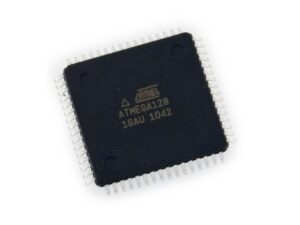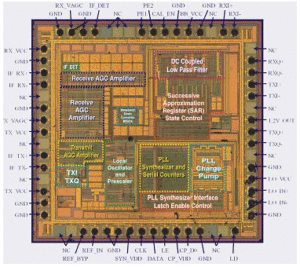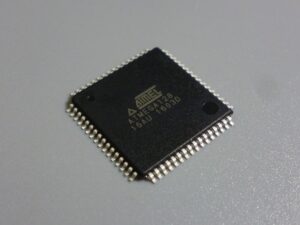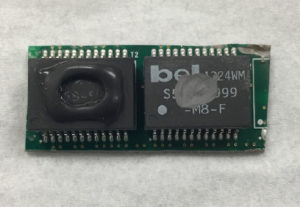Posts Tagged ‘break microcontroller source flash’
 Break Microcontroller ATmega128 Heximal
Break Microcontroller ATmega128 Heximal
We can Break Microcontroller ATmega128 heximal, please view the Microcontroller Atmega128 features for your reference:
Features
· High-performance, Low-power AVR 8-bit Microcontroller
· Advanced RISC Architecture
– 133 Powerful Instructions – Most Single Clock Cycle Execution
– 32 x 8 General Purpose Working Registers + Peripheral Control Registers
– Fully Static Operation
– Up to 16 MIPS Throughput at 16 MHz
– On-chip 2-cycle Multiplier
Nonvolatile Program and Data Memories
– 128K Bytes of In-System Reprogrammable Flash

knacken Sie das Atmel ATMEGA128 gesperrte Mikrocontroller-Manipulationswiderstandssystem und kopieren Sie die gesperrte ATMEGA128-Embedded Heximal-Datei des Mikroprozessors auf die neue MCU-Einhei
Endurance: 1,000 Write/Erase Cycles
– Optional Boot Code Section with Independent Lock Bits
In-System Programming by On-chip Boot Program
True Read-While-Write Operation
– 4K Bytes EEPROM
Endurance: 100,000 Write/Erase Cycles
– 4K Bytes Internal SRAM
– Up to 64K Bytes Optional External Memory Space
– Programming Lock for Software Security
– SPI Interface for In-System Programming
JTAG (IEEE std. 1149.1 Compliant) Interface
– Boundary-scan Capabilities According to the JTAG Standard
– Extensive On-chip Debug Support
– Programming of Flash, EEPROM, Fuses and Lock Bits through the JTAG Interface
Peripheral Features
– Two 8-bit Timer/Counters with Separate Prescalers and Compare Modes
– Two Expanded 16-bit Timer/Counters with Separate Prescaler, Compare Mode and Capture Mode
– Real Time Counter with Separate Oscillator
– Two 8-bit PWM Channels
– 6 PWM Channels with Programmable Resolution from 1 to 16 Bits
– 8-channel, 10-bit ADC
8 Single-ended Channels
7 Differential Channels
2 Differential Channels with Programmable Gain (1x, 10x, 200x)
– Byte-oriented 2-wire Serial Interface
– Dual Programmable Serial USARTs
– Master/Slave SPI Serial Interface
– Programmable Watchdog Timer with On-chip Oscillator
– On-chip Analog Comparator
Special Microcontroller Features
– Power-on Reset and Programmable Brown-out Detection
– Internal Calibrated RC Oscillator
– External and Internal Interrupt Sources
– Six Sleep Modes: Idle, ADC Noise Reduction, Power-save, Power-down, Standby and Extended Standby
– Software Selectable Clock Frequency
– ATmega103 Compatibility Mode Selected by a Fuse
– Global Pull-up Disable
I/O and Packages
– 53 Programmable I/O Lines
– 64-lead TQFP
Operating Voltages
– 2.7 – 5.5V (ATmega128L)
– 4.5 – 5.5V (ATmega128)
Speed Grades
– 0 – 8 MHz (ATmega128L)
– 0 – 16 MHz (ATmega128)
 Break Microcontroller PIC16F628A Content
Break Microcontroller PIC16F628A Content
We can break Microcontroller PIC16F628A Content, please view the Microcontroller PIC16F628A features for your reference:
GENERAL DESCRIPTION
The PIC16F627A/628A/648A are 18-Pin FLASH-based members of the versatile PIC16CXX family low cost, high performance, CMOS, fully-static, 8-bit microcontroller.
All PICmicro® microcontrollers employ an advanced RISC architecture. The PIC16F627A/628A/648A have enhanced core features, eight-level deep stack, and multiple internal and external interrupt sources. The separate instruction and data buses of the Harvard architecture allow a 14-bit wide instruction word with the separate 8-bit wide data.
The two-stage instruction pipeline allows all instructions to execute in a single-cycle, except for program branches (which require two cycles). A total of 35 instructions (reduced instruction set) are available, complemented by a large register set.
PIC16F628A microcontrollers typically achieve a 2:1 code compression and a 4:1 speed improvement over other 8-bit microcontrollers in their class. PIC16F627A/628A/648A devices have integrated features to reduce external components, thus reducing system cost, enhancing system reliability and reducing power consumption.
The PIC16F628A has 8 oscillator configurations. The single-pin RC oscillator provides a low cost solution. The LP oscillator minimizes power consumption, XT is a standard crystal, and INTOSC is a self-contained precision two-speed internal oscillator to read MCU. The family HS is for High-Speed crystals. The EC mode is for an external clock source.


